Stop scoring leaders and start transforming them
Most assessments compress complex executive leadership assessments into a single number. That looks neat on a dashboard—but it rarely changes behavior. The ASCENT Leadership Model replaces generic scoring with shared definitions and a clear development path. It organizes performance into six domains, 67 specific elements, and a descriptive rubric that turns feedback into targeted action.
Why numeric ratings stall development
Five-point scales invite guesswork and bias. They yield data without direction: a “3.8” in communication doesn’t tell a leader what to do differently. In today’s hybrid, high-velocity environment, executives need language that distinguishes which behaviors matter and a mechanism to translate that clarity into a plan. Traditional 360s often generate scores that lack shared definitions or follow-through—see this critique on the evaluation and devaluation of 360-degree feedback—which is exactly what ASCENT was designed to fix.
Meet ASCENT: rigorous, practical, coachable
ASCENT is a leadership model built for modern organizations:
- Six interconnected domains: Purpose, People, Culture, Strategy, Execution, Systems
- 67 elements: Each framed as a concrete question tied to observable behaviors
- Descriptive ratings: From Lacking to Mastery, with clear definitions for each level
- Multi-rater input: Self, boss, peers, and direct reports to surface patterns that matter
- Action workflow: A coach-guided process that selects priorities and codifies next steps
This structure replaces ambiguity with precision. Assessors choose the definition that best fits, not an arbitrary number—aligning how the organization talks about leadership and eliminating “grade inflation” and mixed messages.
What the six domains measure in our executive leadership assessment?
- Purpose: Values, vision, and empowering others to contribute to something larger than themselves.
- People: Self-mastery, trust, listening, coaching, and the ability to mobilize talent.
- Culture: The norms leaders reinforce—resource allocation, inclusion, well-being, and narrative.
- Strategy: Strategic perspective, analysis, positioning, pricing, and commercial acumen.
- Execution: Goal clarity, delegation, alignment, collaboration, KPIs, and performance cadence.
- Systems: Systems thinking, decision rights, mental models, and anticipating second-order effects.
Together, these domains reflect how leaders actually create outcomes: by connecting inner work and relationships to strategy, execution, and the broader system.
The 67 Elements—How They Drive Action
How they’re structured.
67 behavior-based elements sit under six domains (Purpose, People, Culture, Strategy, Execution, Systems). Each uses descriptive levels (Lacking → Mastery) so raters select a definition, not a number. The result is precise, coachable feedback.
Purpose (selected elements)
- Empowering People — delegates authority, builds ownership.
- Vision & Mission Clarity — translates strategy into meaning for teams.
- Change Leadership — creates urgency, reduces friction, sustains momentum.
Operational move: Tie purpose to decision rights so teams know why and who decides.
People (selected elements)
- Trust & Integrity — consistent commitments, principled trade-offs.
- Listening & Inquiry — seeks dissent, clarifies before advising.
- Coaching & Development — grows capability, not dependency.
- Self-Mastery — regulates emotions, models resilience.
Operational move: Cadenced 1:1s that combine performance, growth, and feedback.
Culture (selected elements)
- Resource Signaling — budgets and time reinforce stated values.
- Inclusion & Belonging — voices are invited and used.
- Well-being Norms — sustainable load and recovery.
- Narrative Crafting — consistent story about change.
Operational move: Align meetings, forums, and recognition with the culture you intend.
Strategy (selected elements)
- Strategic Perspective — systems view; second-order effects.
- Market & Customer Insight — segments, JTBD, pricing, competition.
- Prioritization & Trade-offs — fewer, sequenced bets.
- Commercial Fluency — unit economics and sales motion.
Operational move: Reduce “peanut-butter” spread; set clear kill criteria.
Execution (selected elements)
- Goal & KPI Design — few and vital; leading/lagging mix.
- Delegation & Accountability — explicit owners and decision rights.
- Cross-Functional Alignment — defined handoffs and SLAs.
- Performance Cadence — run the week, month, quarter with intent.
Operational move: 90-day operating rhythm with 3–5 priorities and weekly checkpoints.
Systems (selected elements)
- Whole-Systems Thinking — maps stocks/flows and feedback loops.
- Decision Rights — pushes decisions to the edge; clear escalation.
- Risk & Unintended Consequences — premortems and guardrails.
- Information Design — dashboards that drive the right behavior.
Operational move: Visualize the system, identify reinforcing/balancing loops, adjust metrics.
From executive leadership assessment to accountable action
1) Multi-rater assessment. Leaders invite a balanced set of raters. Each rater reviews concise behavior definitions and selects the level that best fits for each element.
2) Coach-guided debrief. A structured conversation turns insight into choices. The focus is learning and forward momentum, not judgment.
3) Prioritization. Raters flag the single “most critical” element per domain. Patterns reveal leverage points where small shifts produce outsized results.
4) ASCENT Leadership Worksheet. Leader and coach select one or two elements to improve (per domain), set current vs. target levels, and document specific actions, owners, and timelines.
5) Socialize and iterate. The leader shares focus areas with stakeholders, requests support, and revisits progress on a regular cadence.
The deliverable is not a report that sits on a shelf. It’s a living plan that ties directly to the leader’s operating rhythm.
What makes ASCENT executive leadership assessment different?
- Shared language over subjective numbers. Definitions reduce ambiguity and drive consistent expectations across raters.
- Behavioral granularity. With 67 elements, feedback is specific enough to coach—and to measure.
- Built for accountability. The worksheet converts insight into targets and actions embedded in the leader’s workflow.
- Human and developmental. The aim is capability building, not “gotcha.” Leaders feel supported and challenged in equal measure.
- Systems orientation. Individual habits, team dynamics, strategy, and organizational structures are addressed together—where change is most durable.
A representative outcome
A senior leader’s baseline showed several domains sitting between Progressing and Partial Mastery, with direct reports notably lower in Purpose, Culture, and Execution. Cross-rater “most critical” flags converged on Empowering People, Delegation, and Change Management. Two years later, repeat assessment reflected broad movement toward Mastery—especially in direct reports’ experience—corresponding with stronger engagement and expanded role scope. The shift wasn’t accidental; it was the product of disciplined focus on a few behaviors that mattered most.
“Is 53 minutes too long?” Why the time is intentional
ASCENT invests participants in a common understanding of excellence. The assessment itself educates raters, reinforcing clear standards and shared vocabulary. That learning effect compounds across the organization and enhances the quality of future feedback and development conversations.
Fit with your leadership culture
CO2 Coaching meets leaders where they are, combining curiosity, business acumen, and systems thinking. We focus on belief shifts that unlock sustained behavior change. The result: leaders who perform at a higher altitude—and bring their teams and organizations with them. See if we are the right fit for you and your team!
How to get started
- Identify 6–8 balanced raters (self, boss, peers, direct reports).
- Complete the ASCENT assessment (six domains, 67 elements).
- Debrief with a CO2 Executive Coach; select the few priorities that matter most.
- Build the ASCENT Leadership Worksheet with targets, actions, and owners.
- Share the plan, then review progress on a fixed cadence.
If you’re evaluating leadership assessments for your executives or leadership team, let’s discuss an ASCENT pilot and what a 90-day outcomes roadmap would look like in your context.
FAQs
What’s different about ASCENT compared to a typical 1–5 assessment?
Descriptive definitions replace subjective numbers, creating shared meaning and more actionable feedback.
Which domains and elements are included?
Six domains—Purpose, People, Culture, Strategy, Execution, Systems—cover 67 elements tied to observable behaviors.
How does ASCENT become a development plan?
A coach-guided debrief highlights leverage points and converts them into a focused worksheet with targets, actions, and owners.
How long does it take and why?
Approximately 53 minutes. The process educates raters and aligns expectations, improving both the data and the organization’s leadership language.



